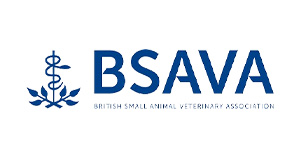Increased risk of Bluetongue in the UK
Published on: June 3rd, 2024
Bluetongue is a notifiable disease caused by infection with bluetongue virus. Bluetongue virus is mainly spread by biting midges. It can affect sheep, cattle, goats, llamas and alpacas. Dogs and other carnivores can also become infected if they eat infected afterbirth or aborted foetuses. While it does not affect people or food safety, outbreaks can result in prolonged animal movement and trade restrictions. As a notifiable disease, if you suspect bluetongue in your animals then you must report it.
Bluetongue virus serotype 3 (BTV-3) has been found during surveillance testing on 73 premises in Kent, Norfolk and Suffolk. There is no evidence that bluetongue virus is currently circulating in biting midges but biting midges are now active and feeding due to the warmer spring weather, so it is a good idea to familiarise yourself with the signs of bluetongue disease.
There is no vaccine available for bluetongue virus serotype 3 (BTV-3), vaccines are available in parts of Europe for other bluetongue strains but there is no cross protection between strains. There is also no evidence that insect repellents and insecticides will prevent infection as they do not kill the midges fast enough to prevent them biting, so prevention involves trying to avoid having stock in areas with high midge activity. It may be beneficial to house animals in buildings that keep midges out at dawn and dusk (when midges are particularly active). Do not allow farm pets to chew on or play with potentially infected materials (such as aborted material and afterbirth). Remain vigilant for the signs of clinical disease in your stock and do report signs of disease to APHA.
Signs of Bluetongue in sheep tend to be more obvious than in cattle and can include:
- Ulcers or sores in the mouth and nose
- Discharge from the eyes or nose and drooling from the mouth
- Swelling of the lips, tongue, head and neck and the coronary banD (where the skin of the leg meets the horn of the foot)
- Red skin as a result of blood collecting beneath the surface
- Fever
- Lameness
- Breathing problems
- Abortion, foetal deformities (small, weak, deformed or blind) and
- stillbirths
- Death
Signs of Bluetongue in cattle include:
- Lethargy
- Crusty erosions around the nostrils and muzzle
- Redness of the mouth, eyes, nose
- Reddening of the skin above the hoof
- Nasal discharge
- Reddening and erosions on the teats
- Fever
- Milk drop
- Not eating
- Abortion, foetal deformities (weak, deformed, blind) and stillbirths
- Adult cattle may be infectious for several weeks while showing little or no sign of disease
For further information about bluetongue disease please visit the APHA website
https://www.gov.uk/government/collections/bluetongue-information-and-guidance-for-livestock-keepers



Author
Lottie Meire
Bluetongue virus serotype 3 (BTV-3) detected in UK livestock. Learn about the disease in sheep & cattle, signs, prevention & reporting requirements.
bluetongue disease in cattle | bluetongue disease in sheep | bluetongue virus serotype 3 | bluetongue notifiable disease | bluetongue in uk | signs of bluetongue in sheep | signs of bluetongue in cattle | bluetongue vaccine | bluetongue prevention | APHA bluetongue information











